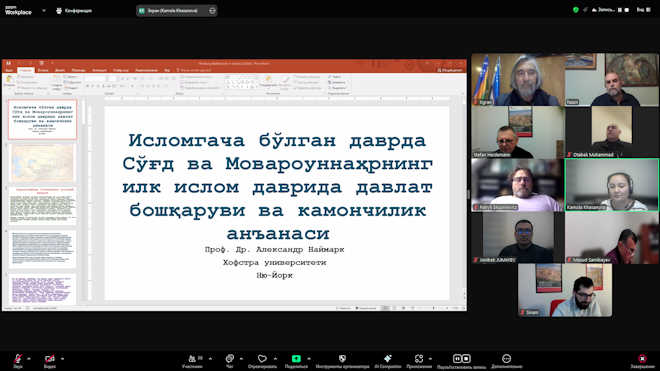The Imam Bukhari International Scientific Research Center, in collaboration with the Institute for Asian-African Studies at the University of Hamburg, Germany, held another online seminar in the “Material Cultural of the Zerafshan Valley” online lecture series. It was attended by employees of the Center, researchers from scientific institutions in our country and abroad, as well as scientists from several countries of Europe and USA.

At the seminar Dr.Aleksandr Naymark, Professor of Fine Arts, Design, and Art History at Hofstra University in Hempstead, USA, presented a lecture on “Archery and Kingship in pre-Islamic Soghd and in early Islamic Mawarannahr”.

The scientist emphasized that during archaeological excavations, a Karakhanid palace was discovered in the ruins of Afrosiab, and a painting depicting a ruler holding a bow and arrow was discovered on the palace wall.
This image, as a symbol of power, was minted on coins in Central Asia until the Karakhanid dynasty. We can see it on coins from Noshkhab and Samarkand.
Professor Alexander Naymark notes that the image of an archer was present on the back of Parthian coins for 450 years. Therefore, the scientist associates these images with ancient interactions and trade between peoples.
Most of the inscriptions on coins minted during the Karakhanid dynasty founded by Abdulkarim Sotuk Bugrakhan were in the Arabic alphabet, and included the caliph’s name as a sign of respect and loyalty.

The scientist’s research in this area allows researchers to reveal the history and culture of Central Asia through numismatics.
 Imom Buxoriy xalqaro ilmiy-tadqiqot markazi bukhari.uz
Imom Buxoriy xalqaro ilmiy-tadqiqot markazi bukhari.uz











